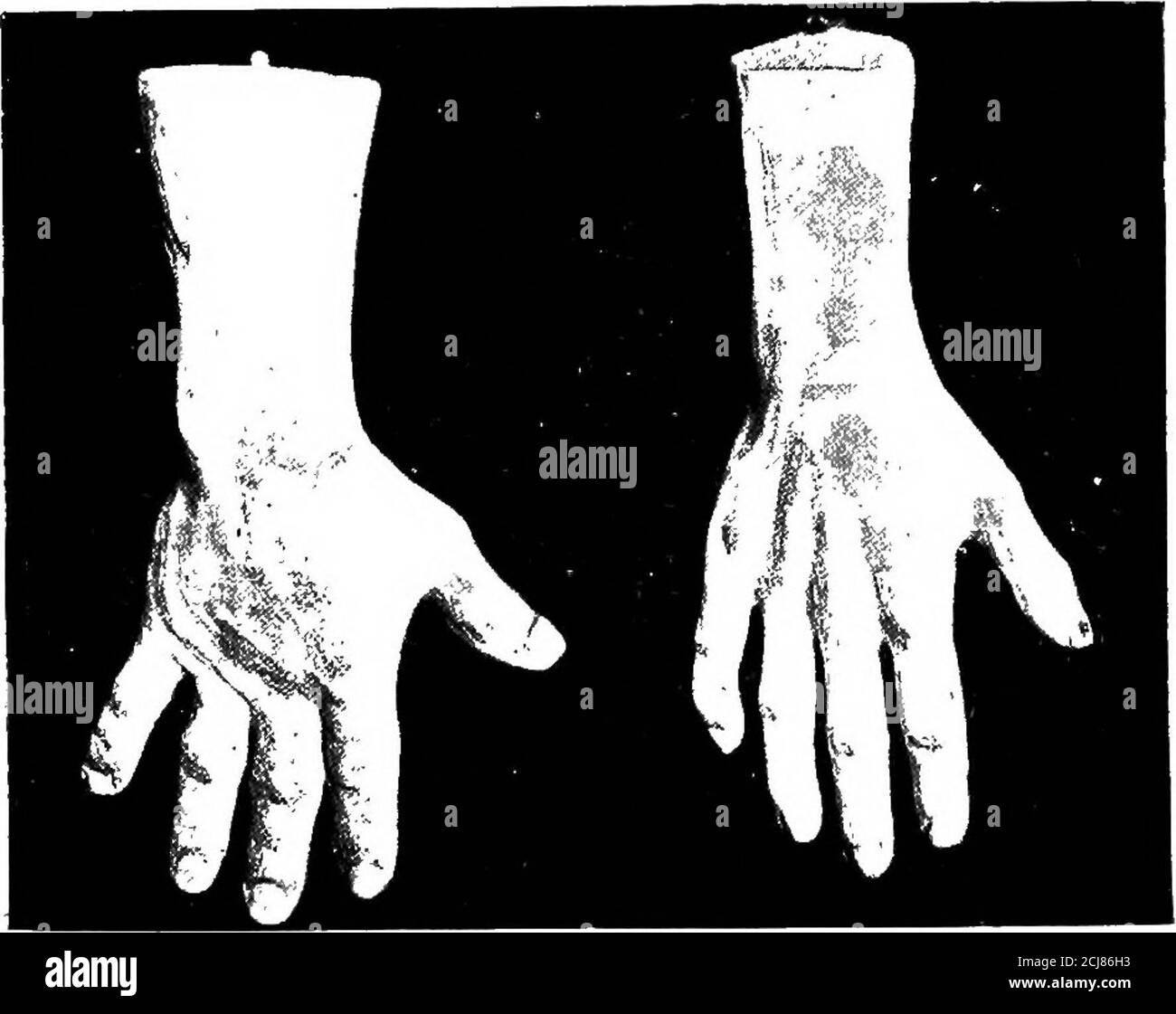. Acromegaly . Fig. l.j —.Skiagraplj of the left haml of a tuhject of acromegaly (of patient of Fij. 2). ACKOMEUALY. 61 Tinusually far from eacli other (increase of the cartilaginouscovering (?) Schlesinger). It is important to notice, especially for a diagnosisin doubtful cases, that the hands are notwithstand-ing never deformed or disfigured, but merely enlarged.The substance of the soft parts is increased, and it is difficultto raise the skin of the dorsum into folds. The naturalinterphalangeal folds of the knuckles are especially wellmarked ( mains capitonnees, Pechadre), as are the lines

Image details
Contributor:
Reading Room 2020 / Alamy Stock PhotoImage ID:
2CJ86H3File size:
7.2 MB (182.1 KB Compressed download)Releases:
Model - no | Property - noDo I need a release?Dimensions:
1775 x 1408 px | 30.1 x 23.8 cm | 11.8 x 9.4 inches | 150dpiMore information:
This image is a public domain image, which means either that copyright has expired in the image or the copyright holder has waived their copyright. Alamy charges you a fee for access to the high resolution copy of the image.
This image could have imperfections as it’s either historical or reportage.
. Acromegaly . Fig. l.j —.Skiagraplj of the left haml of a tuhject of acromegaly (of patient of Fij. 2). ACKOMEUALY. 61 Tinusually far from eacli other (increase of the cartilaginouscovering (?) Schlesinger). It is important to notice, especially for a diagnosisin doubtful cases, that the hands are notwithstand-ing never deformed or disfigured, but merely enlarged.The substance of the soft parts is increased, and it is difficultto raise the skin of the dorsum into folds. The naturalinterphalangeal folds of the knuckles are especially wellmarked ( mains capitonnees, Pechadre), as are the lines inthe hoUoyr of the hand. The fingers are, as a whole, cylin-. FiG. 16.—The two types of hand in aoron:egaly. drical, and flattened from dorsum to palm. Since their circum-ference at the base and end is proportionately increased, thecomparison to little sausages (Marie) is justifiable. The nailsdo not share in the enlargement, they rather appear small, often flat, and frequently show slight longitudinal cracks. The bones of the hand are not aflEected to the same degreein all cases. Generally, as seen in the skiagraph (Fig. 15), the phalanges are somewhat coarser, with more markedlateral curves. Osteophytes, as already mentioned at p. 29, are not generally well marked. They may be even almostentirely absent; Boltz (2) found in his case, on post mortemexamination, a tiny exostosis on only one single phalanx. 62 ACROMEGALY. Our picture shows siich a one very plainly on the metacarpalhone of the index finger. In some cases the bones of the fingers show a decidedincrease of growth in length, through participation of theepiphysis, so that the hand becom